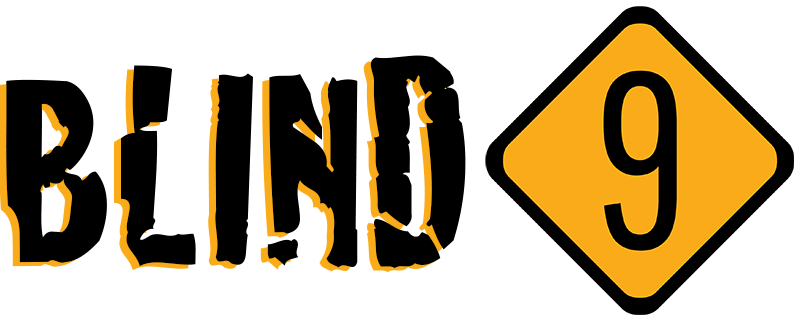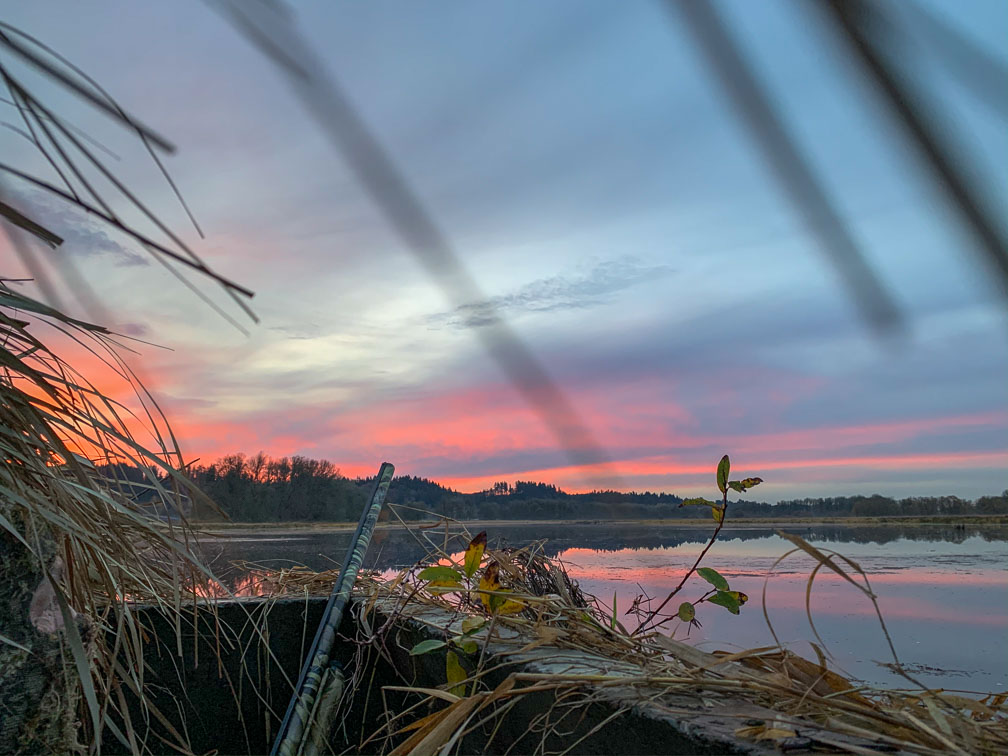A perfect spot for beginners and others who want a safe, controlled hunt
The Ridgefield National Wildlife Refuge is almost literally in my backyard. I had my first waterfowl hunt here and I’ve hunting it more than any other refuge.
If you’re used to, and expect, a lot of elbow room then this is probably not a hunting experience you will enjoy. Its 760-acre hunting area boasts 21 blinds, two of which are handicapped accessible. They seem adequately spaced so you’re not dropping shot on your neighbors, but it’s common that you will be working ducks over your decoys and have shooting in nearby blinds spook your quarry. Plenty of first-timers come out here and often shoot at high and out-of-range birds. I’ve seen some remarkably bad hunting out here and done some myself in my first season.
The good thing about Ridgefield is that if you have a pick it’s worth showing up, depending on your other hunting options. Each year there are 3-4 top blinds with about 8-10 middle-of-the-road blinds and a few that are not producing. Even if you have a late pick you stand a good chance of moving up 4-6 spots due to no-shows, maybe more. You’ll get a blind that is producing. You also might get a top blind just because the people picking before you don’t like its location.
Another good thing is you don’t have to worry much about car break-ins here as the hunting area is only open to hunters.
Planning to Hunt at Ridgefield
Your first step is to participate in the preseason lottery to get a guaranteed blind. Ridgefield publishes the lottery registration information on their refuge page in September and closes the draws in October. You can select 30 dates from the available hunting days at $1 each. You’ll get an email a week or two before the season letting you know if you got a blind, the date, and pick position. If you get a spot, you’re guaranteed to hunt. Otherwise you’ll need to wait for a standby position on the morning you want to hunt. Standby can be hit and miss here. You stand a greater chance on a weekday hunt picking up a standby blind.
On the day of the hunt, drive to the check station at least 2 hours before legal hunting time, which will be published in the state of washington game regulations for that year. You check in, select your blind according to your pick number and then off you go! Remember there is a limit of 25 shells that you can take to the blind and they will check occasionally. Be sure to check the regulations and map for up-to-date information on regs, fees, and blind locations. They are published on the refuge hunting page.
Success at Ridgefield
Despite the close quarters, I’ve had plenty of success here and often find I am limited by my own hunting skill rather than lack of opportunity. The reality is that the hunting portion of the refuge accounts for only 15% of the 5,200 acres, and those remaining non-hunting areas hold a lot of waterfowl, which traverse the hunting area throughout the day. Multi-person limits are rare and many hunters bail out early, between 11 a.m.-1 p.m. But the action, especially during migration, can be consistent throughout the day.
Nearly all the blinds, save for two field pits, offer ponds and waterways to set your favorite decoy spreads. But unlike other duck-over-decoy setups you’ll want to be ready to take a few snap passing shots, too.The continuous blasting moves birds around the refuge throughout the morning, with some spooked birds, especially Northern Shovelers and Buffleheads, skimming the marsh like missiles. You may also want to take easy shots at birds on the swing for your decoys because there’s a risk nearby shooting will spook them before they commit.
It seems like our best days are when we create adequate cover for our blinds, especially the pits, push our decoys out to our max shooting range, in clusters, away from the blind, and leave lanes for birds to fly and land close in. If we stay still, quiet, and patient we often are rewarded with a number of good opportunities on singles or pairs. Larger groups are rare.
Decoys
We bring 12-24 decoys, with half being mallards and the other half a mix of teal, pintail, and wigeon. There are a few blinds where more might help, such as blinds 5, 17, 18, and 19. I’ve not seen success with wind ducks. If you don’t mind messing with them, I’ve had success with jerk rigs.
Calling
Use your call sparingly and know your quarry. It seems most people blast away on their mallard calls when in reality mallards only account for about 12%-20% of the birds taken here, depending on the year. Shovelers by far are the most common. Pintail, wigeon, and teal account for the most of the rest. A multi-purpose whistle peeped at the right time can help you stand out. Otherwise you can stick to simple quacks and feeding chuckles. Wary pintails can respond to a trilled whistle. But honestly after the first few days of the season a call here is best used as a last resort. Sometimes you can doze in the blind and listen for the calling from nearby hunters to alert you to birds.
Geese
There are opportunities to take geese at the refuge, as many roost throughout it and take off after daybreak to feed. If you are close to a roost on the east end of the refuge you can catch one of these flocks as they gain altitude just over the treetops. This is a chance to get a goose or two. I caution you to know your shooting limitations, both in skill and in ammunition, as these overhead shots can be deceptive. I know from experience that shooting at a goose too high with small shot will result in cripples that glide a hundred yards away or more, leaving you little chance for retrieval. I carry a few shells of BBs just for these occasions.
You also might get a chance at a lone goose or a pair. Bring a goose call and if you see a loner start calling at it. Even if you don’t have any goose floaters or decoys in your spread, sometimes these geese are so eager to get back to a flock they will fly right on top of you looking for the calling goose, presenting an easy shot.
Waterfowlers’ Tips
Check in early
Get to the check station early. I’ve seen it many times when someone will roll in to the check station after the volunteers manning it have closed check-ins. If you don’t make it you won’t get your pick and you’ll have to take your chances on the stand-by list. Don’t be that guy throwing gravel from your tires as you gun it out of the parking lot in disgust.
Stand-by on the weekdays
If you don’t have a pick you have fair odds of getting a standby pick during the Tuesday and Thursday hunt days. On Saturdays your odds are much slimmer.
The 10 a.m. stand-by can be a steal
If you don’t have a pick and don’t get a stand-by pick (or if you don’t want to get up that early) come back at 9 a.m. to get yourself on the 10 a.m. stand-by list. You will only have a few others looking to get blinds and you have a better chance of landing in a hot blind for the day. Hunters have to check their birds in at the station as they leave so you’ll know which blinds are producing and which hunters are abandoning duds. I’ve had a few hunts here where the afternoons turned out better than the mornings.
Beware the dusky goose
The refuge was created as a part of system to help protect the subspecies of the Canada goose called the Dusky goose. These are medium- to large-sized geese with dark breasts that you will see throughout the non-hunting areas of the refuge. The problem for hunters is you are not allowed to shoot a Dusky. If you do, you get fined, lose your goose hunting license for the season and have to retake the goose ID test. At Ridgefield you have to check out at the check station before you leave and any geese you’ve downed will be checked. If you’re new to goose hunting in this area or not confident in your Dusky spotting, take a look at my Dusky goose field identification guide.

